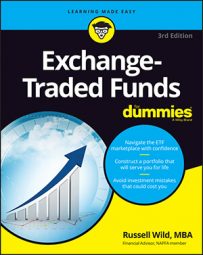With all that exchange-traded funds (ETFs) have going for them, it’s not surprising that they have spread like wildfire on a hot day in July. From the beginning of 2000, when there were only 80 ETFs on the U.S. market, to the end of August 2011, when there were slightly more than 1,300 ETFs, the total assets invested in ETFs rose from $52 billion to just about $1.1 trillion.
Certainly, $1.1 trillion pales in comparison to the $12 trillion or so invested in mutual funds. But if current trends continue, ETFs may indeed become as popular as the Beatles.
Part of ETFs’ popularity stems from the growly bearish market of the first decade of this millennium. Investors who had been riding the double-digit annual returns of the 1990s suddenly realized that their portfolios weren’t going to keep growing in leaps and bounds, and perhaps it was time to start watching investment costs.
There has also been a greater awareness of the triumph of indexing — investing in entire markets or market segments — over trying to cherry-pick stocks.
It took from 1993 until, oh, 2001 or so for this newfangled investment vehicle to really start moving. By about 2003, insiders say, the majority of ETFs were being purchased by individual investors, not institutions or investment professionals.
BlackRock, Inc., which controls about 45 percent of the U.S. market for ETFs, estimates that approximately 60 percent of all the trading in ETFs is done by individual investors. The other 40 percent is institutions and fee-only financial advisors, like me.
Fee-only, by the way, signifies that a financial advisor takes no commissions of any sort. It’s a very confusing term because fee-based is often used to mean the opposite.
Actually, individual investors — especially the buy-and-hold kind of investors — benefit much more from ETFs than do institutional traders. That’s because institutional traders have always enjoyed the benefits of the very best deals on investment vehicles. That hasn’t changed.
For example, institutions often pay much less in management fees than do individual investors for shares in the same mutual fund. (Fund companies often refer to institutional class versus investor class shares. All that really means is “wholesale/low price” versus “retail/higher price.”)

